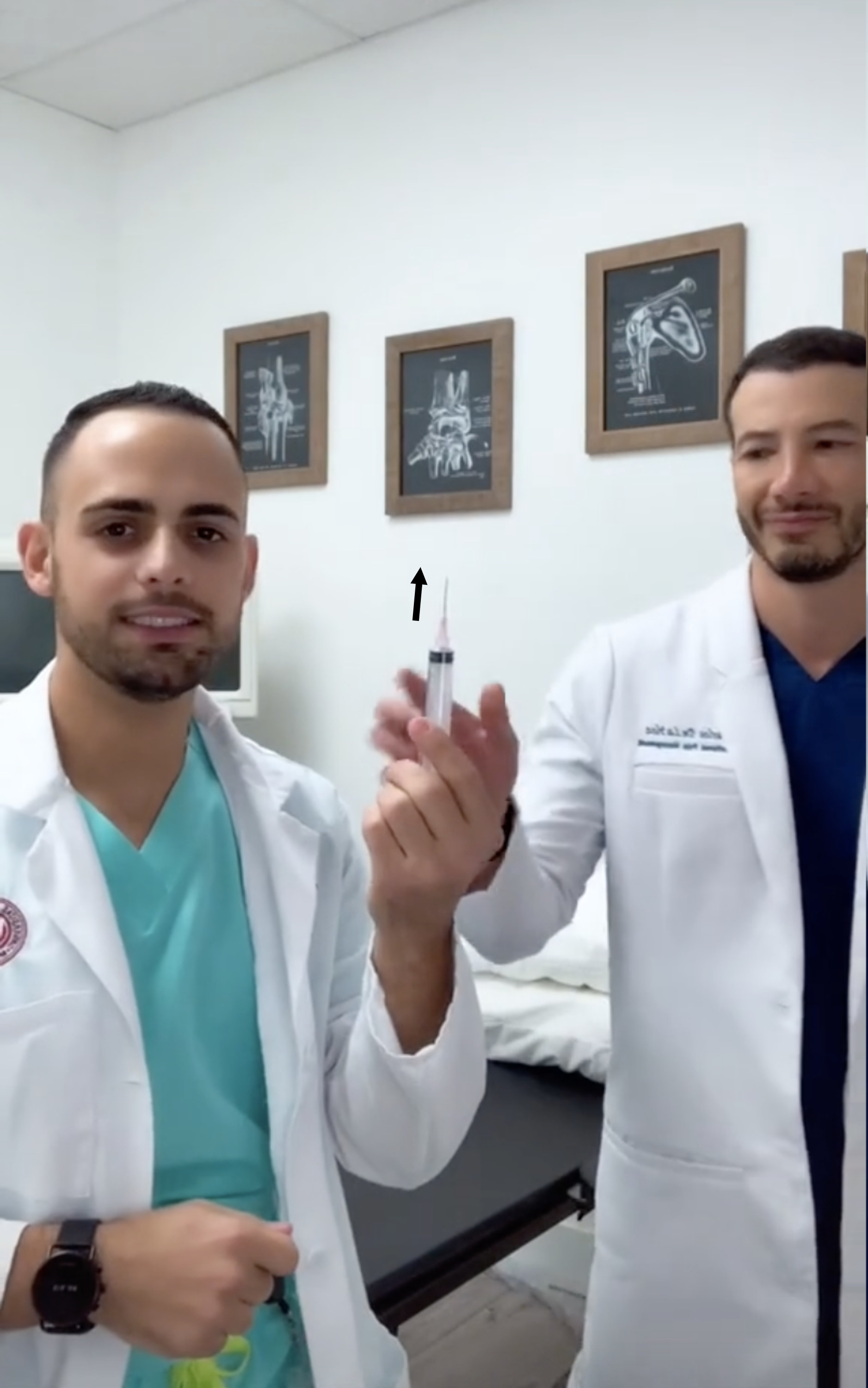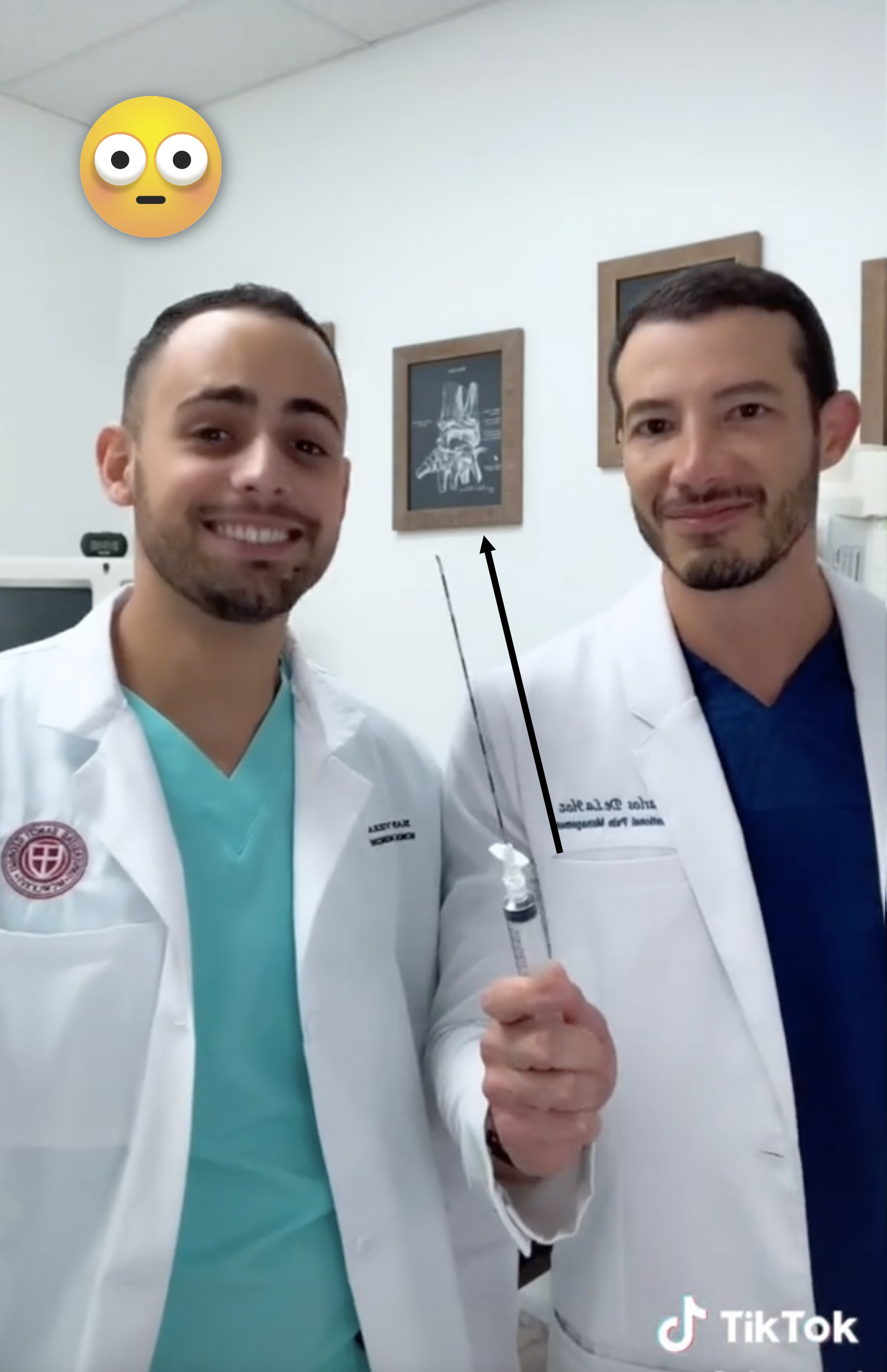Warning: If you have a fear of needles, this post may not be for you. 🚨
TikTok, otherwise jokingly known as TikTok University, has become a hub for learning tons of medical-related facts that were never discussed in school.

Through the app, I've learned that dentists can tell if you've recently given a blowjob, cheap wine can give you a yeast infection, and easy tricks for beating constipation.
Now, with the help of St. George’s University medical student Hansel Viera and Dr. Carlos De La Hoz, I know just what child-bearing people go through when they get an epidural.
Is it option 1?

Then, is it option 2?

It's option 3! (Which will haunt my nightmares for years to come.)

